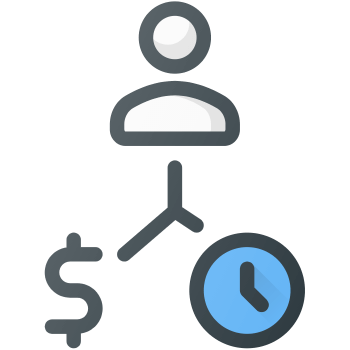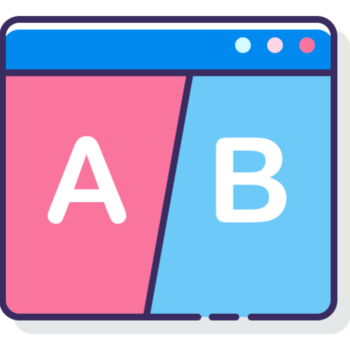Sales Funnels
Target Marketing – A Quick Case Study

We talk about targeting the right people for your product, but just how valuable is it to know your audience?
Well, it is of critical importance to the life of your business and can have a substantial effect on your profits and whether you even get off the ground in the first place!
And, even worse, if you are using paid media such as FB or Google ads you will be wasting some serious money by not targeting the right audience.
So, as you can see, doing the research on your niche needs to be done before you even think about creating and selling a product or service.
And once you have decided on a profitable niche, you need to dial in and really find out what makes these people tick so you can target those specific people who will be most attracted to your offers.
It may not be sexy, but it can have a huge impact on your business, and in an area where so many people give up before they have really started, wrong niche selection and poor target marketing is one of the primary causes for people giving up.
Now we have established that being able to target your market successfully is of vital importance, let’s look at a company that did this right.
Target Marketing Done Right!

Here’s a quick case study of a deodorant that became a top seller through nothing more than pinpoint targeting of its customers:
In Brandwashed: Tricks Companies use to Manipulate Our Minds and Persuade Us to Buy, we learn how Axe Deodorant took over their market through laser-focused targeting.
Unilever executive David Cousino tells us that Unilever first analyzed the potential male deodorant user by breaking men down into six profiles:
The Predator – He takes advantage of drunk girls, and lies about his job and where he lives
Natural Talent – Athletic, smart, and confident. He doesn’t need to lie to score
Marriage Material – Humble and respectful, he’s the sort of guy you want to bring home to Mom and Dad
Always the Friend – He always hits that glass ceiling
The Insecure Novice – He has absolutely no clue what he’s doing, and things get awkward fast – the geeks and nerds
The Enthusiastic Novice – He has absolutely no clue what he’s doing, but he’s outgoing and tries valiantly anyway
Based on these six profiles, they chose to target the ‘Insecure Novice,’ since these are the guys who need the most help in getting women.
The next step was to create the ads. Research showed that the ultimate male fantasy isn’t to have just one woman at a time – it’s to be irresistible to several sexy women at once. (Seriously, did they really need research to determine this?)
That’s why the TV ads proclaim that if you use Axe Deodorant, you will get the chicks. ALL the chicks.
The result? Axe came out of nowhere to be the #1 male antiperspirant / deodorant brand.
Is this a bit cheesy? Yes. But did it work? Absolutely!
But in the process, they had a great deal of crossover into the other groups as well.
This is an added benefit of targeting that most marketers don’t realize. They think in order to get the biggest share of the market, they must target everyone.
But when you target everyone, you tend to get almost no one. Paradoxically, when you target one specific group, you tend to get customers from all the other groups as well.
One side note: In this case, Axe’s marketing worked almost TOO well. High school kids were completely dousing themselves in Axe, thinking they would get every girl in class to fall all over them.
Instead, school districts complained of kids reeking of the cologne-like smell.
How could Axe have fixed this? Perhaps by cautioning its users that because of the power of Axe, a normal amount was actually more effective than going full coverage.
Instead, Axe backpedalled a bit from their original campaign, and sales declined.
Here’s what you can do:
- Make a list of potential target markets for your next product.
- From that list, choose the market – or demographic – you want to target.
- Create a profile of ONE person in that market – this is your ideal customer.
- Tailor your product and your message to that one person.
- Dance around your office as you see the sales come flooding into your in box.
Stop targeting everyone and start targeting your ideal customer. Once you do, it will become clear how you should market, where you’ll find your customers, and how to get them on board.
And yes, your sales will almost certainly increase because you not only know what they need, you also know wat they want and you can tailor your products and services just for them and they will gladly pay you for them which is win-win for both buyer and seller 🙂

How To Create A Great Value Proposition

Your value proposition determines if people will bother reading about your product or close the page.
If you get it right, sales can skyrocket. Get it wrong, and you’ll wonder why all that traffic isn’t converting into sales.
Does Little Guy Joe who just got into online marketing need a value proposition? He sure does if he wants to make sales.
So What Is A Value Proposition Anyway?

Not wanting to rely solely on my memory, I did some research, and this is what I found to be something of a consensus of what a value proposition should be:
A great value proposition incorporates one or more of these qualities:
- Explaining how your product is going to solve your customer’s problem, or how it’s going to improve your customer’s situation. (This is called relevancy)
- States specific benefits your product delivers (This is quantified value)
- Tells your customer why they should buy from you instead of your competition (This is unique differentiation)
But I think we need more clarification. In doing my research, I also found that a great value proposition…
- Targets a specific market
- Focuses on quality, cost or speed, or a combination of two of those
- Clarifies what the company or product does not do
People need to be able to read it and immediately understand it. Which is to say, corporate gibberish created by a committee of eggheads isn’t going to cut it.
For example, if I tell you that my value proposition is:
“Revenue-focused automated marketing and sales closing solutions unleashed through collaboration throughout the revenue cycle”
I’m guessing you’re going to be bewildered. Or you’re falling asleep. Or you’re confused as can be.
And there’s no need to be redundant. For example:
Online Billing and Invoicing Software
Invoice Dude is an online billing software specially designed for small and medium businesses. Thousands of businesses and individuals trust us for their invoicing!
This tries to appeal to too many people – small businesses, medium businesses and individuals.
There is no differentiation from other online billing and invoicing software.
In addition, it says ‘thousands of businesses,’ yet offers no proof. Stating an actual number such as 12,549 would be a great help, and it could be updated automatically or manually on a daily or weekly basis.
Plus, I don’t know about you, but this entire value proposition puts me to sleep.
And with a name like Invoice Dude, they could have done soooo much better.
What A Value Proposition Is NOT

It’s not a catch phrase or a slogan.
“Coke, it’s the real thing” and “L’Oreal, because you’re worth it” are slogans, not value propositions.
It’s also not a positioning statement.
“America’s #1 bandage brand, heals the wound fast, heals the hurt faster” is a positioning statement.
These are better than nothing, but they’re not what we’re striving for.
Calling your product the ‘real thing’ doesn’t show one benefit or reason why we should buy it over the competition.
Because you’re worth it doesn’t tell us anything – it just sounds good. And expensive.
Being #1 doesn’t make me want to buy your product, either.
These are all examples of slogans, not value propositions:
- Like sleeping on a cloud (Sealy)
- Milk from contented cows (Carnation)
- Save Money, Live Better (Wal-Mart)
- I’m lovin’ it (McDonalds)
- When you care enough to send the very best (Hallmark)
- Just Do It (Nike)
- Finger Lickin’ Good (KFC)
- Have it your way (Burger King)
- Melts in your mouth, not in your hands (M&M)
- The happiest place on earth (Disney World)
- The best a man can get (Gillette)
- Betcha can’t eat just one (Lays)
- Think outside the bun (Taco Bell)
- “Koo Koo for Cocoa Puffs”
- “Snap! Crackle! Pop!” (Rice Krispies)
- Are you a Cadbury’s fruit and nut case?”
- “Keep Walking” (Johnny Walker Whiskey)
- “Wii would like to play.”
- “I’d rather die of thirst than drink from the cup of mediocrity.” (Stella Artois)
- “We don’t charge an arm and a leg. We want tows.” (From a towing company)
- “Yesterday’s meals on wheels” (From a septic tank)
- “We repair what your husband fixed.” (From a plumber’s truck)
Value Proposition Components

A value proposition is usually longer than a slogan.
In fact, it can have a headline, a sub-headline, one short paragraph of text and possibly bullet points.
And it might even include a visual, such as a photo, graphics or hero shot.
You make notes, try things, think about it, tweak it, ask opinions and tweak it some more.
Headline: This is usually the big end benefit you’re offering your customers, stated in one clear, short sentence. You might mention the product, the customer or both. This is where you grab attention, because if you don’t, then you’ve already lost a fair share of your prospects.
Sub-headline: This is a specific explanation of what your product does, who the ideal customer is and why your product is useful.
One short paragraph: This can be instead of or in addition to a sub-headline, and serves the same purpose as the sub-headline above.
3 bullet points: These are the key benefits or features. Notice we said three, not unlimited. You may or may not need bullets, but if you do, keep them short and punchy.
Visual: Images always communicate faster and generally better than words. You might show the product, the happy customer or an image that reinforces your message.
How To Write Your Value Proposition

This takes time to get it just right. In the beginning, do the best you can, and then adjust it along the way.
There is no reason to delay starting or growing your business just because you don’t have the perfect value statement yet.
Start out by answering these questions:
- What’s your product or service?
- What is the BIG end-benefit of using it?
- Who is your ideal target customer?
- What makes your offer unique?
- How is your product different from anything else available?
NOTE: If you can’t answer why your product is unique or different, then you might want to work on the product itself. Selling a ‘me too’ product that is identical to what’s already being offered can be difficult UNLESS you already have a well-known brand.
Once you have your first draft of your value statement, ask yourself these questions:
- Is it clear and easy to understand?
- Does it communicate concrete benefit(s)?
- Will a customer know exactly what result they will get from using your product?
- Does it say how it’s different or better than the competition?
- Does it avoid hype? (amazing, fantastic, best ever)
- Does it avoid business jargon? (revenue generated resource allocation blah blah blah)
- Can your ideal prospect read it and understand it in a few seconds?
If someone is shopping around, then they’re likely to check out 4 or 5 different options before deciding.
By having your value proposition at the top of your first page, you can easily stand apart from all competitors.
And readers tend to prefer bullet points – they’re easier to understand and remember.
Examples Of Great Value Propositions

Uber: Tap the app, get a ride
Uber is the smartest way to get around. One tap and a car comes directly to you. Your driver knows exactly where to go. And payment is completely cashless.
Unbounce: Build, Publish and A/B Test Landing Pages Without I.T.
The mobile responsive landing page builder for marketers.
<button copy>Build a high-converting landing page now.
- Build a page
- Publish it
- Test and optimize
Slack: A messaging app for teams who put robots on Mars!!
NASA’s jet propulsion laboratory is one of tens of thousands of teams around the world using Slack to make their working lives simpler, more pleasant, and more productive.
Trello: Trello is the free, flexible and visual way to organize anything with anyone.
Drop the lengthy email threads, out-of-date spreadsheets, no-loner-so-sticky notes, and clunky software for managing your prospects. Trello lets you see everything about your project in a single glance.
iPhone: Why there’s nothing quite like iPhone
Every iPhone we’ve made – and we mean every single one – was built on the same belief. That a phone should be more than a collection of features. That above all, a phone should be absolutely simple, beautiful and magical to use.
Value Proposition Boosters

Sometimes it’s difficult to find ways to differentiate yourself from your competition, so you might try adding one or more of these to your offer:
- Free shipping
- Fast or next day shipping
- Free trial
- Free setup or installation
- Free bonus
- No long-term contracts or payments
- A very clear money back guarantee
- A better than money-back guarantee
- A discounted price
- Customization
- One-on-one personal help
Remember, you don’t need to hit your value proposition out of the park on the first try. But you do need to build one and use it.
Of course, it’s going to depend on your product, your niche, your customers and even your competition.
And most of all, it will depend on how well you craft your value proposition.
It actually makes your job easier, in that you are no longer trying to be a jack of all trades, or trying to make your product fit everyone.
The clarity your value proposition brings can also bring you peace of mind and a better ability to grow your business big, strong and fast.

How To Build A Business, Sell It And Retire In The Next 5 Years!

Are you willing to work like crazy for 5 years (give or take) so you can retire?
If so, I’ve got a business plan for you. And I don’t care if you’re 20 or 70 – this can work.
One note before we get started: Anything that you either can’t do, don’t want to do or don’t have time to do, you outsource.
And in many cases that’s going to mean outsourcing some of this.
Oh yes, did you notice how I covertly slipped that “7 figure payday” in there? I’m serious about that. Doing what I’m about to lay out for you, you can indeed retire in about 5 years with about 7 figures.
Your results may vary – in fact, they might be a whole lot better than that, I don’t know.
Let’s get started:
Step 1: Select Your Niche

What I’m about to propose isn’t rocket science. It’s not even new. But it is profitable, and here’s the key: You can do this in parallel, meaning instead of doing just ONE of what I’m outlining, you do several.
I recommend 3 – 5 of them.
What you’re going to do is build an entire business from the ground up, with an eye on selling it.
That’s right – the entire time you’re doing this, you have your exit strategy in mind.
It’s sort of like someone marrying for money, knowing they’re going to be asking for a divorce in 5 years. The money is a sure thing, they just have to put in the time and work.
Okay, that was maybe a bad analogy, but you get the point.
If you put in the time and do the work, you will get the money.
It needs to be a topic that has plenty of interested people willing to buy plenty of products, and of course there needs to be plenty of affiliate products continually coming into the market.
Step 2: Setup A Sales Funnel

Now that you’ve got your topic, you’re going to build a sales funnel.
Run a free offer on a squeeze page to get subscribers and place a couple of products in your funnel for them to buy.
Maybe you’ve got a $7 report and a $37 video course, or whatever.
These should be quality products that YOU own. And yes, they can be built around PLR, or you can outsource, etc.
I know what you’re thinking – thus far I haven’t told you anything new, except for the fact that you’re doing all of this with an eye to selling it.
Yet who does this? Very few people, but those who do end up with BIG paydays.
Do everything under a pen name. Make no mistake – EVERYTHING must be under your pen name.
And for each of these businesses that you build, you need a different pen name.
Okay, you’ve got a squeeze page to capture names, a funnel with a low-priced product, a mid-priced product and a membership site.
Step 3: Setup A Blog

Now you need a blog. Get a great logo, excellent branding and make it look super professional. Do NOT skimp on the branding and logo.
Post on the blog at least a couple of times a week, preferably more.
Make each upsell in your funnel a stand-alone product, too, and promote those on your blog.
Promote affiliate products to your list to make some good money as you go along.
Step 4: Write A Book!

Now write a book. See? I told you there was work involved. You can use content from your blog to create your book, or hire someone, or just write it yourself.
Link from inside the book to a squeeze page to capture more subscribers.
Put your book on Amazon and get your subscribers to review it for you. Yes, the book is under your pen name, too.
Don’t worry too much about promoting the book. Your real motivation here is to build credibility. A book on your topic with your pen name on it looks AWESOME when you put the thumbnail at the TOP of your blog.
Wow! You (your pen name, actually) are an EXPERT.
If you create a big product such as a $200 – $1000 course, get affiliates to promote it. Or get affiliates to promote your memberships site.
Your goal is to build your list BIG, make some nice income along the way, and put together a very professional looking business which you then sell for six or seven figures.
Rinse And Repeat!

If you do this simultaneously in 3 to 5 different niches, you will have an AWESOME retirement in about 5 years or so.
What I recommend: Start in ONE niche and get everything into place. Hire someone to write the blog posts for you and do some promotion.
You see where this is going. Five years of hard work, along with rolling some of your profits back into the business, and you then get to sell them.
Sites like these that have products, big lists and a BOOK sell for a healthy six figure income. Sometimes even seven figures. Apiece. And you’re going to have 3, 4, maybe 5 of them.
Remember to keep everything separate on each site. Separate hosting. Separate autoresponders. Separate everything. This makes it super easy to turn control over to someone else when the time comes.
Turnkey online business are always in demand. From a buyer’s perspective, they pay a big chunk of money but then they get a guaranteed stream of income. All the buyer has to do is continue what you started.
You can even turn over your outsourcers to the buyer if they don’t want to do the work themselves, and often they won’t. For them it’s an investment in their future. For you it’s a major payday and a plane trip to the islands.
For example, your pen name is Jon Smith. Your real name is Abby Jones. Jon Smith often recommends Abby Jone’s product or blog or freebie to his readers.
Thus you get people subscribed to your list, too, who get to know you, not just your pen name.
You retire, and you can continue to send out emails promoting affiliate products.
So not only do you get a big payday – you also get some large lists of your own that you can continue to promote products to.
Remember – 5 years of hard work, and then you can retire.
No job in the world, that I know of, offers you a retirement plan like that.

7 Ways To Increase Your Conversion Rate NOW

1000 prospects come to your site or sales page. 1% of them buy a $50 product. You’ve made $500.
You invest 2 days trying a few different ways to increase your conversions, and 3 are successful. You only increased your conversions by 1%, yet you’ve doubled your income, selling 2% of the prospects who come to your sales page.
Now for every 1000 prospects, you make $1,000.
And you send 1000 prospects a day, meaning…
Yet so many marketers never bother to do any of the things I’m about to suggest.
Why? I suppose it’s one of those things they’ll “get around to” but they never do.
So here’s what I recommend: If you don’t want to do any of the following, then OUTSOURCE it. We wrote an entire article on the importance of outsourcing elsewhere in this edition, so I won’t harp on it here.
Let’s get started on boosting your conversions:
1: Create A Compelling And Clear Value Proposition

Your value proposition can be the number 1 element that determines if people will bother to read more on your page.
And it’s also the main thing you need to test.
In a nutshell, your value proposition clearly states:
- How your product solves the customers’ problem or improves their situation (relevancy)
- Delivers specific benefits (quantified value)
- Tell why they should buy from you instead of your competition (unique differentiation)
Here’s an example from Prey: https://www.preyproject.com/
Rest Safe – We’ve Got Your Back
Prey lets you track and find your phone, laptop or tablet.
Protect what you care for and it’s free.
I could do an entire article on creating a compelling value proposition – and I’ll do exactly that in a future post for you.
2: Perform A/B Testing

You create two alternative versions of your page, each with a different headline / color scheme / call to action etc.
You do a split test to see which one works better. When you find out what converts better, then you test something else.
The more elements you test, the higher you can boost your conversions.
Things to test: Headline, page layout and navigation, the offer itself, using different media (such as a video) and even a radical change if you think you might want to start over.
You can use Google Optimize if you’re looking for a free A/B tester, or Optimizely if you want more options.
3: Set Up A Proper Sales Funnel

Sometimes your conversions are taking a hit because you’re asking for the signup or the sale too soon in the process.
If people are still in ‘browsing’ mode, they might not be psychologically ready to subscribe or buy.
If you’re looking to improve conversions on a squeeze page that only asks for their email address, your focus should be on improving the reason why they would want to sign up. Making your offer more compelling – something that will immediately spark their desire – should do it.
But if you’re selling a product, it’s possible that you need to do more to build trust, develop a relationship and prove your expertise.
Remember, the longer and deeper the relationship with the prospect, the more likely they are to buy from you.
4: Address Objections Before They Arise

No matter what you’re selling or how much you’re selling it for, there will be objections.
If I tried to sell $100 bills for $1, there would be objections (and you know what they are.)
Make a list of all the possible concerns your prospects might have.
And then address each one of those in your presentation / webpage / sales funnel.
5: Build Trust

People won’t buy from you if they have no need for your product, if they have no money to buy your product, if they’re not in a hurry, and if they don’t trust you.
There’s not a lot you can do about the first 2 items on that list.
You can create urgency by limiting the number of products to be sold or the duration of your sale.
So what makes people trust your website?
Several things:
- You’ve got citations and testimonials clearly visible.
- You’re endorsed by well-known people in your niche.
- You’ve got a physical address and maybe even a photo of your office.
- If you or your business has relevant credentials, you’ve got them displayed.
- You’ve got clear, easy to find contact information that includes a phone number.
- Your site looks professional – not something a kid whipped up on his Intel 486 in the 1990’s.
- Your site contains plenty of useful information.
- You update your site’s content often. If your latest blogpost is from 2016, you’ve got a problem.
- You show restraint with hype, blinking banners (please don’t!) ads, popups and such.
- You have zero or nearly zero errors (when it comes to trustworthiness, one error is forgivable, two aren’t.)
6: Stop Trying To Sound Smart

If I were to give you a value proposition that reads like this…
“Revenue-focused sales automation and marketing effectiveness solutions unleash collaboration throughout the revenue cycle,”
…would you have a clue what I was talking about?
Because I sure don’t. It’s not useful to the person reading it, unless your goal is chase them off of your page. Then I suspect it’s highly effective.
Just remember, clarity if key. If they don’t understand exactly what you’re saying, they’re not going to convert.
7: Remove All Distractions

Your goal is to get people to focus solely on the action you want them to take and nothing else. Take a look at your page for anything that might divert the visitor away from what you want them to do. Minimize distraction, unnecessary product options, links and extraneous information.
And ask yourself if there is anything else you can remove that is not contributing to the conversion.
Increasing your conversion rate isn’t hard, but it does take effort…
Effort that will be well-rewarded in increased sales and revenues long after you’re done making the necessary changes.

3 Marketing Lessons That Will Transform Your Business

You can take an awful lot of those “how to market online” courses and sometimes still not learn the truly ground-breaking stuff.
I’m talking about the seemingly unimportant things that turn out to be so important, it’s like a scene in one of those adventure movies:
The hero fights through obstacle after obstacle to get to this secret cave that hasn’t been entered in a century.
He pries open the heavy door, sweeps away several inches of cobwebs, and by the light of his torch he sees something shiny. He picks it up… it’s a gold coin! Nice, but not that earth-shattering, right? It’s just one coin…
Taking a set forward, he sees a small chest. Opening it, he sees a couple hundred gold coins. Yeah! This is pretty cool.
But then he catches just a glimmer of something deeper in the cave. Opening the door wider to let light in, he sees more gold. And priceless statues. And gemstones. And… the treasures go back as far as the eye can see.
Holy cow. That one gold coin turned out to be the beginning of more wealth than the GPA of most countries.
And they might almost appear trivial. But I promise you, if you follow this advice, your online income can become almost limitless.
And by the way, some people have paid literally thousands of dollars to discover what I’m about to show you:
Marketing Lesson 1: Make An Irresistible Offer

You’ve heard the term irresistible offer before, but what does it mean?
First, it’s an offer that’s better than anything your competition has.
Second, it’s so good that’s it’s truly hard to pass up.
For example, if I were to sell you a brand new car for $1,000, that’s an irresistible offer.
You can dress a pig up in a lovely, low-cut evening gown, or even a tiny bikini and high heels. But it’s still a pig.
(Not trying to pick on pigs here, btw – I think they’re kinda cute and definitely smart.)
You can have weak marketing and a great offer and make it work.
But great marketing will never compensate for a weak offer.
If you don’t have the right offer, then it doesn’t matter how great the copy is, what the headline is, who is promoting it and so forth.
If you want to make sales, you’ve got to have an absolutely superior, irresistible offer that the prospect simply cannot turn down.
And you’ve got to back the offer up with a product that delivers, too. I’ve seen offers that blew me away, but once I got into the product, I realized it was 80% hype and 20% substance.
As you might have guessed, I asked for a refund – as did close to 50% of their purchasers.
So make them an offer they cannot refuse, and then deliver on every promise you make.
Do this and you cannot help but make a fortune.
Marketing Lesson 2: You Need A Big Marketing Idea

Just having a bigger promise or using a hyped headline isn’t going to work anymore.
If you’re going to be seen and heard by your prospects, you’ve got to cut right through all the shouting online and present something brand new.
Think of it this way: A regular marketing idea is doing what’s already been done, expect maybe it’s 10% bigger or 10% better.
That used to work, but these days it just blends with everything else.
Take cars for example. A regular marketing idea is to make a car 10% more gas efficient, or 10% sleeker/bigger/smaller/curvier/boxier etc.
If you think about it, most of the cars today just sort of blend. They look a lot alike, work a lot alike… it’s always been like that.
Then there’s Tesla. Put a Tesla side by side with any other car, and you’ll notice a difference. Talk about how a Tesla runs, and it’s revolutionary.
Don’t let your idea be the latest model of Ford or Chevy.
Make it a Tesla.
Give your prospects a feeling of discovery, of something completely new that gives them an AHA! Moment.
Offer them hope that this is finally THE solution they have been searching for.
It’s powerful, indeed.
Marketing Lesson 3: Customer Acquisition Is All About The Math

I know you keep hearing about free traffic. But free traffic isn’t free; it costs you time and work. And more time. And more work.
If you want to make serious money, then you’ve got to learn some math and be willing to invest some money to make that money.
Buying new customers is how you grow big and fast.
Think of customer acquisition as an investment.
You’re investing in the acquisition of assets — customers.
And to do this wisely… like the best marketers in the world… you need to know some numbers.
For example, one of the absolute most valuable marketing numbers for you to understand and use is the Maximum Allowable Acquisition Cost (MAAC).
MAAC tells you the most you can pay to get a new customer.
And to know your MAAC, you also need to know the lifetime value of your customer. Which in the beginning is hard, so do this instead – know the 3 month value of your customers.
How much do they spend with you in 3 months? Whatever that number is, you need to spend less than that to get a new customer.
Most entrepreneurs and marketers don’t know their MAAC or their customers’ lifetime value.
Of if they do know the numbers, they don’t use them to determine their traffic generation budgets.
But if you want to earn six or seven figures a year, you’ve got to know and USE this stuff.
Very few average entrepreneurs and marketers understand this, but now you do.
So, did I just hand you three gold coins?
Or a vast and unending treasure trove?
That’s up to you and what you do with this information.




